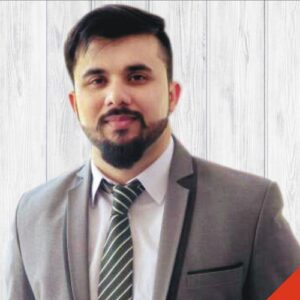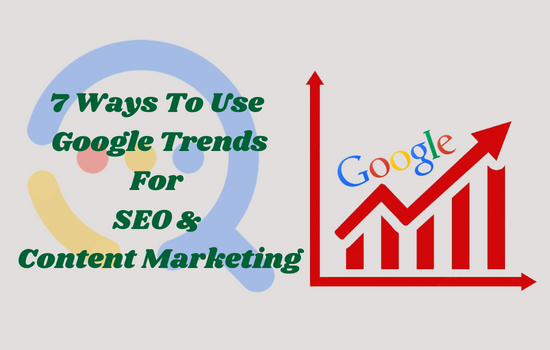Meta descriptions may be the key to improving your organic SEO rankings.
Providing they are worded well, that is!
Users should be compelled to click on your page in the search results after reading an excellent meta description.
To improve your SEO, it should also contain keywords.
The guidelines to create meta descriptions that will help you dominate Google search results are provided below.
What Are Meta Descriptions?
Search result snippets are displayed by search engines to inform users of the content of a page before they click on it.
Users use meta descriptions to determine if they want to click on a search result that includes your website. Most importantly, they have a significant role in how well your website performs in search engine rankings.
A brief example of a meta description from our website is provided below.
Why Are Meta Descriptions Important?
Because the Google algorithm uses meta tags (including meta descriptions) to identify which pages should rank highly for particular keywords, meta descriptions are significant.
You can include a meta tag that isn’t in your text if you’re using meta descriptions correctly. This may mean the difference between appearing on page one of search results for “best shoes” versus page four.
Meta descriptions are useful for:
- Increase your click-through rates to increase conversions and sales.
- Enhance indexing to improve your position in search engine results (SERPs).
- Make it simpler for users to find the content they want without having to read page names or meta descriptions.
- On average, pages with meta descriptions receive 5.8% more clicks than sites without.
Even the dominant search engine Google advises adding meta descriptions to your website. This is to say Meta descriptions improve user experience by letting searchers know what your website is all about and what information they may get by clicking.
When a link is shared, meta descriptions may also appear on social media platforms. A search engine might write a meta description for you if one is missing or if you have written it improperly. However, it could not be as factual or compelling as the one you write yourself, which is the issue.
Writing your own meta descriptions is essential because of this.
How to Write Meta Descriptions?
You may increase your organic traffic and engage consumers on the SERP by using meta descriptions.
What are some tips for creating meta descriptions that encourage clicks and raise your ranking? Here are eight suggestions to make your meta descriptions more interesting.
1. Your description should have a CTA.
One effective technique to get users to click on your website is to include a call-to-action (CTA) in your meta descriptions. When consumers see it in the SERPs, you can utilize words like “Learn More,” “Click Here,” or “Shop Now.”
CTAs make it clear to readers what the page offers and what to expect after clicking. Users may receive incentives from them to visit and interact with your website.
CTAs can be used to promote an email sign-up, sell a product, or point readers to your social media profiles.
This LinkedIn example from Automattic invites users to sign up on the platform in order to apply for their vacancies.
2. Concentrate on Your Value
A smart strategy to encourage visitors to click is to include words that highlight the value you provide. An individual should be able to determine the value of the content while reading the meta description.
When applicable, use phrases like “learn,” “see,” or “watch” to encourage users to engage with your information. The use of additional phrases like “best,” “bargain,” “new,” or “popular” can help improve the impact of your meta descriptions.
3. Test Your Meta Descriptions With A/B Split
A meta description is a wonderful spot to test out new words, phrases, or calls to action.
Without making any permanent or significant changes to the overall design of your site, this will assist you in determining what increases engagement.
By creating two meta descriptions for each page, you can A/B test your meta descriptions.
One keyword, phrase, or CTA variation could be used in one meta description. A different offer or term may be the subject of the second meta description rather than your existing one.
Check your Google Analytics to discover which meta earns more clicks after running each one for a few weeks. Afterward, apply that knowledge while creating new meta descriptions.
Consider looking at other data, such as bounce rate, time on page, or conversions, if clicks are close. Meta descriptions have an impact on more than just traffic!
4. Experiment With Character Length
There is a 150-character limit on meta descriptions. Users won’t see any content after the cut-off if your meta is longer than this since it will be truncated in the search results.
This is an illustration of a truncated meta. Please note the ellipses:
You can experiment with your description to find what works best for each page, even though you can’t exceed the limit. For instance, detailed tutorials might actually see an increase in clicks due to users’ need for more information when the results are reduced.
On your main page, you might discover that shorter meta descriptions perform best, whilst blogs benefit from longer meta descriptions. Or you might discover that the best meta descriptions for your recommended items page have a longer word count.
Avoid going beyond the suggested character limit because doing so could hurt your rankings.
5. Create Special and Interesting Descriptions
Meta descriptions are crucial for drawing readers’ attention since they give a summary of the content that is present on a page.
Use several strategies to catch readers’ interest, such as a clickbait headline or a topic they want to know the answer to.
Try utilizing attention-grabbing terms or phrases like “shocking,” “hilarious,” or “life-changing” to draw them in. Just be careful not to make unfulfilled promises.
As you can see from the aforementioned sample, they make use of a very dynamic voice that gives the reader a decisive push.
You are informed of what to anticipate without being given any pointless details. You would probably click on this link if you were looking for an easy approach to improving your SEO.
You’ll also see that the aforementioned example is quite precise and devoid of filler.
In particular, if you want to rank highly in the SERPs, you must do this.
Most importantly, double-check that the description accurately describes the page’s content.
6. Make sure your meta descriptions contain keywords.
Meta descriptions should contain keywords for two reasons:
It aids search engines in comprehending the page and improves the ranking of your content. Moreover, it reassures visitors that the page addresses the subject they are searching for.
Use a service like Ubersuggest to locate the ideal keywords for your website. In other words, to raise your ranking, add these to your meta descriptions.
Note: To guarantee that your website appears in all pertinent searches, each page should employ unique keywords in the meta descriptions.
Remember that Google does not directly factor keyword meta tags into their rankings. That does not imply that users do not find them useful.
Additionally, refrain from overloading your meta descriptions with keywords to prevent search engine penalties. Each meta description should contain one or two keywords per phrase, and they should be relevant to the page.
7. Introduce structured data.
You can add structured data metatags (HTML tags) to your website to give search engines and social media platforms more information. For example, the business name, address, phone number, email address, product description with price points (if relevant), an image URL, and a Twitter account are the most typical sorts of structured data metatags utilized by marketers.
You can start incorporating structured data in many different ways.
You may have noticed that one of the most common strategies is for websites to include reviews in their meta description:
This gives your viewer a clear indication that they will find something useful on your site.
This is a rather simple hack that enables you to start profiting from user behavior without much difficulty because social proof is such a potent tool for selling and growing your brand.
You can create a more potent meta-description with the aid of structured data, which will boost your search engine ranking. They may also assist you in obtaining Google snippets.
8. Do Not Duplicate Meta-Descriptions
For each page, create a unique meta description because it is essential to ranking. The likelihood that search engines and other browsers can comprehend what material is on a website and how it relates to other pages increases when meta descriptions are unique.
For instance, a user won’t know what kind of information is on which page if they read identical meta descriptions on every page of your website.
This is crucial for e-commerce sites because they frequently contain multiple pages with the same content. Therefore, the metas ought to be distinct even if the products are the same.
Duplicate meta descriptions can harm your website because they make it challenging for meta description spiders to index your page. As a result of crawlers’ being unable to distinguish which page is the original, you can also experience indexing penalties.
Examples of Great Meta-Descriptions
The most effective meta-description examples come directly from search engines. Let’s start by taking a look at Google’s own meta description
The code for Google’s own meta description is provided below:
With spaces, there are precisely 159 characters. The top three search engines display Google’s meta description as follows.
Google:
Yahoo:
Bing:
Here are a few branded meta descriptions that do well:
Tesla
The meta description for Tesla sums up the business and its core principles succinctly and effectively. There are no word breaks in the meta description, which fits the SERP well.
Lonely Planet
Lonely Planet poses a question at the top of each page to pique interest and promote clicks. They go on to describe their special value propositions and inspire you to see the world
What to Include in a Meta Description: Conclusion
You should include meta descriptions in your onsite SEO strategy. They ought to be captivating, illustrative, and particular to each page.
Even though meta descriptions are brief, they can raise your position in search engine results pages (SERPs). In other words, by making your page’s content clear to both visitors and search engines.
Every page of your website, including blog posts and product pages, should have a meta description.







